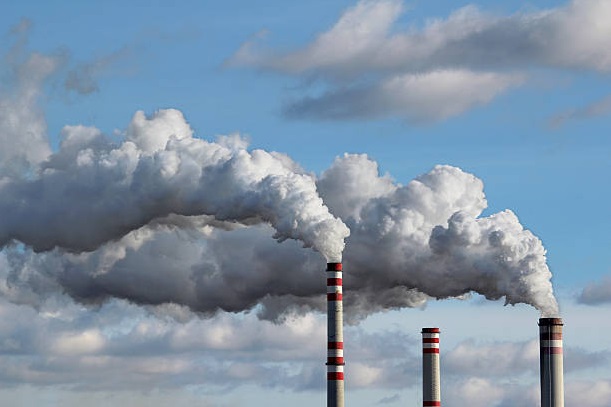Overview of Industrial Waste Emissions
Industrial waste emissions refer to the by-products and pollutants released into the air, water, or soil as a result of industrial activities. These emissions can include gases, liquids, and solids, which are often hazardous and detrimental to both environmental and human health. Industrial waste comes from various sectors, including manufacturing, mining, energy production, and chemical processing.
Types of Industrial Emissions
- Water Emissions: These consist of toxic chemicals, heavy metals, and organic pollutants discharged into rivers, lakes, and oceans. Examples include untreated wastewater, industrial runoff, and pollutants from chemical spills.
- Solid Waste: This encompasses hazardous materials like asbestos, electronic waste, and by-products from industrial processes. It includes both hazardous and non-hazardous wastes that are often disposed of in landfills or through incineration.
- Air Emissions: These include pollutants such as particulate matter (PM), sulfur dioxide (SO₂), nitrogen oxides (NOₓ), carbon monoxide (CO), volatile organic compounds (VOCs), and heavy metals. They are released through processes like combustion, chemical reactions, and industrial operations.
Global Situation and Updates
Globally, the issue of industrial waste emissions has garnered significant attention due to its impact on human health and the environment. Recent developments and updates in this field include:
- Regulatory Measures: Many countries have strengthened regulations to limit industrial emissions. For instance, the European Union’s Industrial Emissions Directive (IED) aims to reduce pollution by setting stringent standards for various industrial activities. In the United States, the Environmental Protection Agency (EPA) enforces regulations such as the Clean Air Act and the Clean Water Act to control emissions.
- Technological Advances: There has been progress in emission control technologies, including advanced filtration systems, catalytic converters, and waste treatment processes. These technologies help reduce the concentration of harmful pollutants before they are released into the environment.
- International Agreements: Global agreements like the Paris Agreement address climate change, which indirectly impacts industrial emissions. The commitment to reducing greenhouse gas emissions influences industrial practices and policies worldwide.
- Increased Awareness and Public Pressure: Public awareness regarding environmental issues has led to increased demand for sustainable practices and transparency from industries. This has prompted many companies to adopt greener technologies and more stringent waste management practices.
Effects on Human Health
Industrial waste emissions have profound and multifaceted effects on human health:
- Respiratory Issues: Air pollutants such as particulate matter and sulfur dioxide can cause or exacerbate respiratory diseases, including asthma, bronchitis, and chronic obstructive pulmonary disease (COPD). Long-term exposure to these pollutants is linked to a higher incidence of lung cancer.
- Cardiovascular Problems: Studies have shown that exposure to air pollution can increase the risk of cardiovascular diseases, including heart attacks and strokes. Pollutants such as nitrogen oxides and carbon monoxide contribute to cardiovascular stress and damage.
- Neurological Impact: Heavy metals like lead and mercury, found in industrial waste, can affect neurological development and function. Exposure to these metals is linked to cognitive impairments, developmental delays in children, and neurodegenerative diseases in adults.
- Cancer Risks: Certain industrial chemicals, such as benzene and formaldehyde, are known carcinogens. Long-term exposure to these substances increases the risk of developing various cancers, including leukemia and solid tumors.
- Reproductive and Developmental Effects: Industrial pollutants can have adverse effects on reproductive health. For example, chemicals like phthalates and persistent organic pollutants (POPs) can affect hormonal balance, leading to reproductive disorders and developmental issues in offspring.
- Mental Health: Emerging research suggests that environmental pollutants may also impact mental health. For instance, exposure to air pollution has been linked to increased risks of depression and anxiety disorders.
Case Studies and Examples
- Bhopal Gas Tragedy (1984): One of the worst industrial accidents in history occurred in Bhopal, India, where a gas leak from a pesticide plant exposed thousands to toxic chemicals. The immediate effects included respiratory distress and long-term health issues such as chronic respiratory diseases and cancer.
- Minamata Bay Mercury Poisoning (1950s): Industrial waste containing mercury was discharged into Minamata Bay, Japan, leading to severe mercury poisoning in the local population. This disaster caused neurological damage and deaths, known as Minamata disease.
- Flint Water Crisis (2014): In Flint, Michigan, USA, industrial contamination led to lead poisoning in the city’s water supply. Residents experienced severe health issues, including elevated blood lead levels and related cognitive impairments.
Mitigation and Prevention
Addressing the health impacts of industrial waste emissions requires a multi-faceted approach:
- Enhanced Regulations: Strengthening environmental regulations and ensuring strict enforcement can help reduce emissions and protect public health.
- Technological Innovation: Investing in cleaner technologies and improving waste treatment processes can minimize the release of pollutants.
- Public Awareness: Educating the public about the health risks associated with industrial waste and promoting community engagement can drive demand for safer practices and greater accountability.
- International Collaboration: Global cooperation and sharing of best practices can help address transboundary pollution and promote sustainable industrial practices.
- Health Monitoring: Implementing health monitoring programs in affected communities can help detect and address health issues related to industrial pollution.
Conclusion
The emissions of industrial waste pose significant risks to human health, impacting respiratory, cardiovascular, neurological, reproductive, and mental health. Recent developments in regulations, technology, and public awareness have advanced efforts to mitigate these impacts, but continued vigilance and action are necessary. By improving regulations, investing in technology, and fostering global collaboration, it is possible to reduce the harmful effects of industrial waste emissions and protect public health.




